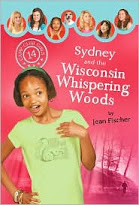Search online for places to inspire your next novel, and you’ll find scores of interesting venues just waiting for your characters to arrive and shake things up.
Here are several ideas to get you started.
Bithlo, Florida: Strange Sports
Head south to Bithlo for the “School Bus Figure 8 Races.” School buses, both traditional and custom designed, zoom around a figure-eight-shaped racecourse trying to navigate hairpin curves and avoid running into one another. What could be more fun than a place like Bithlo – the perfect setting for a quirky novel with quirky characters.
Cumberland Falls, Kentucky: Atmospheric Phenomenon
Moonbows occur regularly during the full moon at Cumberland Falls. A moonbow, or lunar rainbow, happens when moonlight refracts off the cascading water and creates a prism of light in the mist. Imagine that somewhere over the moonbow, a pair of lovers share a moonlit kiss in a romance novel written by you.
Ripon, Wisconsin: Historical Politics
Ripon considers itself the birthplace of the Republican Party. So does Jackson, Michigan. Dig a little deeper in Ripon, and you’ll find a granite marker near a small mid-1800s-style schoolhouse: “In this school house on March 20, 1854 was held the first mass meeting in this country that definitely and positively cut loose from old parties and advocated a new party under the name Republican.” What happened in that little schoolhouse when several dozen Riponians met to protest the extension of slavery? Is this sleepy, little town really the birthplace of the GOP? Here lies the plot for an historical novel about the evolution of the United States’ political system.
 Darwin Falls, Minnesota: Unusual Landmarks
Darwin Falls, Minnesota: Unusual Landmarks
The world’s largest twine ball, rolled by one man, is displayed proudly in the town’s gazebo in Darwin Falls. Francis Johnson began rolling this ball of twine in his basement in 1950. He rolled four hours a day, every day, making sure that the ball was perfectly round. When it became too large for the basement, Johnson moved it to an open-air, circular shed on his farm. He kept rolling until he died in 1979. By then, the giant twine orb weighed nine tons and measured twelve-feet wide. My muse says 1950s Darwin Falls is the setting for a pre-teen novel about crop circles and a mysterious ball of string.
Annapolis Junction, Maryland: Secret Codes
The clandestine world of cryptology is unveiled at the National Cryptology Museum in Annapolis Junction. Are you thinking of an action-adventure novel full of mystery and intrigue? Then send your characters here to explore the code-making and code-breaking places, tools and techniques used by great masterminds of America’s national defense. Be careful, though. What your characters discover here might be a matter of life or death.
See? Just one unusual place is enough to inspire the setting, plot or characters for your next book.
Leave a comment, and share your ideas for other "novel" places.

















